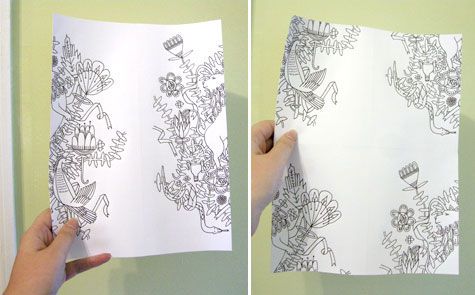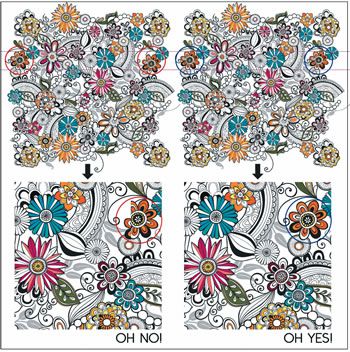Exciting news, we now print on towelling fabric! SPEEDY is our NEW FABRIC Speed Dry Microfiber Towelling.

- Fast to dry
- Super moisture absorbent
- Easy to care
- Ultra-light weight, fold and carry with ease
- 100 % quality microfiber polyester
This fabric is perfect for gym towels, beach towels or blankets, kitchen towels and kid’s bath wraps.
Interested? Give us a call NOW to organise your sample or simply order your sample here!
Digital Fabrics is a fabric printing company based in Sydney, the place to design and print fabrics! We are hiring and in search of a digital printer and coordinator with outstanding work ethic to run full print production in our studio.

In this role responsibilities will include:
Preparing orders for production
Printing jobs using wide format printers
Monitoring print job in process take corrective action
Print transfer and fixation
Liaising with suppliers
Stock control
Processing customers’ orders
dealing with customers
Update and maintain customers records using internal system
Fabric and product quality control, dispatching and shipping orders
Keeping studio neat and tidy
Jumping in wherever necessary to assure the office is running smoothly and functioning efficiently.
Role requirements
Fabric design and textile knowledge
Experienced in Adobe Illustrator, Adobe Photoshop
Computer literacy –Word, Excel, Outlook
Driver licence is a plus
You must be physically fit as this position will require some heavy lifting.
Energetic and a self-starter.
Poised and confident with positive attitude
Self-motivated & highly organized with effective time management skills
Not afraid of being challenged by fast paced environment, fast thinker and problem solver.
Experience in textiles with wide format digital printers is preferred, however if you have other relevant manufacturing or printing experience love to work where fabrics are designed and printed please apply with full resume and cover letter here.
Exciting news, we now print on towelling fabric! SPEEDY is our NEW FABRIC Speed Dry Microfiber Towelling.

- Fast to dry
- Super moisture absorbent
- Easy to care
- Ultra-light weight, fold and carry with ease
- 100 % quality microfiber polyester
This fabric is perfect for gym towels, beach towels or blankets, kitchen towels and kid’s bath wraps.
Interested? Give us a call NOW to organise your sample or simply order your sample here!
Digital Fabrics is happy to announce that we are ready to open the doors to our natural fabric printing orders. It was a long process of research, trials, fabric sourcing, fabric testing, but we are ready and looking forward to print for our customers.

We are currently have natural fabrics to print on: Cotton Canvas, Cotton Drill, Cotton Poplin, Cotton Linen, Bamboo, Deluxe Sateen Cotton. Check our Natural Fabrics page for more information on natural fabrics.
These natural fabrics are very versatile and suitable for all craft projects, clothing, drapery, table linen, cushion covers, pillow cases, kids wear, tea towels, shoes, bags etc.
You can print any image, any colour, any length and create something imaginative with your custom fabric. Creativity is limitless! So let’s not wait any longer, get your files ready, let’s print! Start here!
Essentially polyester is a man-made synthetic plastic resin substance. Polyester can be produced in sheet form, for items like PET bottles, or fibre form for all kind of textiles.
Polyester fabrics are heat sensitive and can be manipulated with high heat and pressure such as giving the fabric permanent pleats, laser cut with patterns and shapes. Polyester fibres can be produced in various forms allowing the manufactured fabric to imitate characteristics of fabrics traditionally produced in natural fibres.

Polyester fabrics are highly stain resistant and there is only one particular type of dyes that can alter the colour or polyester fabrics, known as disperse dyes. While these dyes can be applied to the fabric in several ways, the most common way is by dye-sublimation. Dyes are printed onto a paper substrate which is then pressed into the fabric using high temperatures and pressure. The pressing process bonds the dyes to the polyester fibres of the fabric meaning that they will never fade or wear.
Polyester fibres can also be recycled, using less energy than virgin polyester and less water than organic natural fibre production, which leads to some considering recycled polyester (rPET) a sustainable fabric for future generations. The fabric printing method of dye-sublimation is a completely dry process has no water usage and while the paper is a waste by product, all dye is absorbed by the fabric leaving no dye waste.
Digital Fabrics is happy to announce that we are ready to open the doors to our natural fabric printing orders. It was a long process of research, trials, fabric sourcing, fabric testing, but we are ready and looking forward to print for our customers.

We are currently have natural fabrics to print on: Cotton Canvas, Cotton Drill, Cotton Poplin, Cotton Linen, Bamboo, Deluxe Sateen Cotton. Check our Natural Fabrics page for more information on natural fabrics.
These natural fabrics are very versatile and suitable for all craft projects, clothing, drapery, table linen, cushion covers, pillow cases, kids wear, tea towels, shoes, bags etc.
You can print any image, any colour, any length and create something imaginative with your custom fabric. Creativity is limitless! So let’s not wait any longer, get your files ready, let’s print! Start here!
Natural fabric is woven or knitted from fibres that occur in our natural world. All three sectors of nature; animal, vegetable and mineral produce fibres that can be used in fabric production.

Vegetable, or more commonly classed cellulose-based fibres, include cotton, flax, jute, hemp and bamboo. Each fibre type is derived from a specific part of the plant such seed hair, stem, leaf, husk etc. and consist mainly of cellulose substance.
Animal fibres include wool and silk and consist exclusively of proteins. While wool fabric is most commonly produced from the fleece of sheep, it also includes fleece from alpacas. The hairs or fibres of other animals are also constructed into fabric including rabbit fur, angora fabric and mohair.
Silk is the other notable fibre from an animal, but unlike other animal fibres, it is not made from the hair or fur covering the animal. It is the continuous thread of the spun cocoon of moth larvae. An extensive process is required to produce one silk fibre and in turn, produce silk fabric maintaining its exclusive divine nature.
Mineral fibres are less widely used in production for fashion or interior fabrics but can still be used in an industrial application. Fine drawn threads of metallic fibres can be used on regular textile machinery and are often spun or woven in combination with other fibres to make a length of fabric for industrial use.
Essentially polyester is a man-made synthetic plastic resin substance. Polyester can be produced in sheet form, for items like PET bottles, or fibre form for all kind of textiles.
Polyester fabrics are heat sensitive and can be manipulated with high heat and pressure such as giving the fabric permanent pleats, laser cut with patterns and shapes. Polyester fibres can be produced in various forms allowing the manufactured fabric to imitate characteristics of fabrics traditionally produced in natural fibres.

Polyester fabrics are highly stain resistant and there is only one particular type of dyes that can alter the colour or polyester fabrics, known as disperse dyes. While these dyes can be applied to the fabric in several ways, the most common way is by dye-sublimation. Dyes are printed onto a paper substrate which is then pressed into the fabric using high temperatures and pressure. The pressing process bonds the dyes to the polyester fibres of the fabric meaning that they will never fade or wear.
Polyester fibres can also be recycled, using less energy than virgin polyester and less water than organic natural fibre production, which leads to some considering recycled polyester (rPET) a sustainable fabric for future generations. The fabric printing method of dye-sublimation is a completely dry process has no water usage and while the paper is a waste by product, all dye is absorbed by the fabric leaving no dye waste.
Natural fabric is woven or knitted from fibres that occur in our natural world. All three sectors of nature; animal, vegetable and mineral produce fibres that can be used in fabric production.

Vegetable, or more commonly classed cellulose-based fibres, include cotton, flax, jute, hemp and bamboo. Each fibre type is derived from a specific part of the plant such seed hair, stem, leaf, husk etc. and consist mainly of cellulose substance.
Animal fibres include wool and silk and consist exclusively of proteins. While wool fabric is most commonly produced from the fleece of sheep, it also includes fleece from alpacas. The hairs or fibres of other animals are also constructed into fabric including rabbit fur, angora fabric and mohair.
Silk is the other notable fibre from an animal, but unlike other animal fibres, it is not made from the hair or fur covering the animal. It is the continuous thread of the spun cocoon of moth larvae. An extensive process is required to produce one silk fibre and in turn, produce silk fabric maintaining its exclusive divine nature.
Mineral fibres are less widely used in production for fashion or interior fabrics but can still be used in an industrial application. Fine drawn threads of metallic fibres can be used on regular textile machinery and are often spun or woven in combination with other fibres to make a length of fabric for industrial use.
Through dealing with a lot of creatives we came to realise that some are having difficulties on setting up their artwork digitally into a seamless repeat, so we decided to help and after research we have put together a small collection of useful tutorials in Photoshop and Illustrator. So if you are trying to wrap your head around repeating pattern, these are for you.
- A Beginner’s Guide to Digital Textile Printing (from Design.tutsplus.com)
 //design.tutsplus.com/tutorials/a-beginners-guide-to-digital-textile-printing–vector-3189
//design.tutsplus.com/tutorials/a-beginners-guide-to-digital-textile-printing–vector-3189
- How to make a Repeat Pattern (from DesignSponge.com)
 //www.designsponge.com/2008/05/welcome-julia-and-how-to-make-a-repeat-pattern.html
//www.designsponge.com/2008/05/welcome-julia-and-how-to-make-a-repeat-pattern.html
- Exploring Photoshop: Designing Repeat Patterns (from Creative-Cloth.com)
 //www.creative-cloth.com/photoshop-elements-tutorial-designing-repeat-patterns/
//www.creative-cloth.com/photoshop-elements-tutorial-designing-repeat-patterns/
- Adobe Illustrator for Fashion and Textile design: Print for flat sketch (from Fashion Chalkboard)
 Part 1: https://www.youtube.com/watch?v=5HalcOTtxgo
Part 1: https://www.youtube.com/watch?v=5HalcOTtxgo
Part 2: https://www.youtube.com/watch?v=QFV68tAi88k
- Create beautiful repeating Patterns (from DigitalArtsOnline.co.uk)
 //www.digitalartsonline.co.uk/tutorials/illustration/create-beautiful-repeating-patterns/
//www.digitalartsonline.co.uk/tutorials/illustration/create-beautiful-repeating-patterns/









